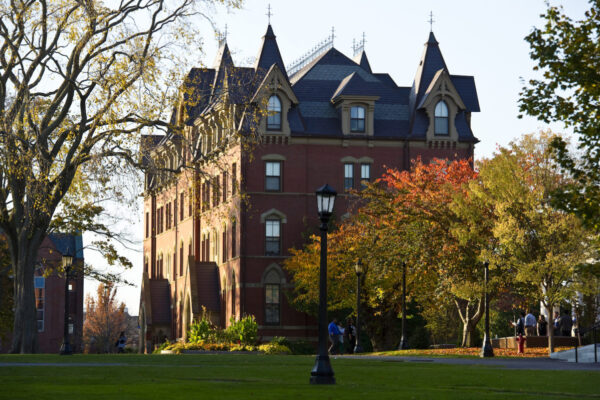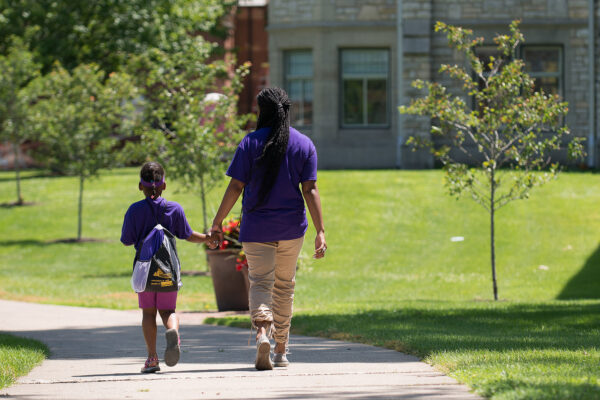By Phil Muehlenbeck and Karina Pineda
With media outlets reporting almost daily on the challenges facing American colleges and universities, often focusing on the closures of small institutions, primarily private nonprofit colleges, you might get the impression that higher education institutions are an endangered species. But to paraphrase Mark Twain, reports of their demise have been greatly exaggerated.
There is no doubt that colleges and universities in demographically challenged states are facing serious headwinds. Yet, stories suggesting that colleges are closing more frequently than they did before don’t withstand a careful examination of the data. Indeed, the rate of closures of all types of colleges and universities actually appears to be lower than it was decades ago.
A history of (failed) dooming predictions
Harvard Business School professor Clayton Christensen is the most recent academic to gain notoriety for predicting in 2011 that “50 percent of the 4,000 colleges and universities in the U.S. will be bankrupt in 10 to 15 years.” (And he doubled down on that prediction in 2017.) But he’s certainly not the first.
In 1971, Earl Cheit, business school dean at the University of California, Berkeley, concluded that schools like Boston College, New York University, Stanford, Tulane, and UC Berkeley were all “headed for trouble” after finding that these institutions’ expenditures were rising faster than income. He even wrote that Harvard was headed for financial difficulty.
If you think that’s apocalyptic, that’s nothing compared to Peter Drucker, who wrote in 1997 that within 30 years, research universities would no longer exist.
He was only a little off: Twenty-two years later, not a single research university has closed.
So what do the data say about closures?
In a nutshell, it appears that for-profit institutions continue to account for the majority of closures. While the closure rate for nonprofit colleges and universities has risen slightly in recent years, it’s certainly not a drastic change from past decades.
According to the latest available data from the National Center for Education Statistics (NCES), the vast majority of degree-granting institution closures between 2014 and 2017 were for-profit institutions—accounting for 86 percent of the total (199 out of 232).
This comes as no surprise, as these institutions were the casualties of Obama-era regulations, along with additional state-level regulations that tightened oversight on for-profit schools. But what caught the attention of many in the media and higher education community was that 2016–17 was a new record for nonprofit closures in a single year—20.
However, that appears to be a one-year aberration, at least so far.
Looking back at the five-year period between 2015 and 2019, a total of just 53 nonprofit institutions closed, according to NCES and Education Dive’s tracker—which doesn’t count mergers between institutions and included only 10 nonprofit schools in 2017, seven in 2018, and eight so far in 2019.
While the average of 10.6 institutions closing per year since 2015 is alarming compared to 5.6 in the preceding five years, this is not the unprecedented pace that today’s media seem to suggest. The early to mid-1990s also saw hikes in closures at about the same rate. When we calculated the yearly average for nonprofit closures between 1991 and 1997, we also found an average of 10.8 per year.
This trend holds true going back to the 1970s, according to data we compiled from NCES, supplemented with the Education Dive tracker and ACE’s internal membership data.
Since 2010, 81 nonprofits closed, roughly eight closures per year. There were 60 closures from 2000 to 2009, averaging just six per year. Meanwhile, between 1990 and 1999, we saw the highest number of closures, with a total of 87 nonprofits, or almost nine a year. This suggests that the current rate of closures is almost identical to that seen in the 1990s, if not even slightly lower.
All of this tracks with ACE’s own data on our current and prior member institutions. What we found was that for the most current decade, we have had 32 nonprofit member institutions close. There were 21 from 2000 to 2009. For the 1980s and 1990s, we had a constant average rate of 24 nonprofit member closures per decade.
Strikingly, though, in the 1970s, we tallied an almost identical figure of nonprofit member closures as for the present decade: 31 (a difference of one institution). Given that from 1970 to 1989, 55 current or former ACE member institutions closed compared to 53 from 2000 to 2019, we believe that the institutional closure rate of the 1970s–1980s was similar to what it has been since 2000.
The bottom line: Both ACE’s membership records and NCES show that the decade with the lowest number of nonprofit closures was in 2000–09. Today’s figures are only slightly higher and are in line with the closures we saw in the period between 1970 and 1999. The number of nonprofit closures over the past few years only looks like an increase when compared to the early 2000’s. And even that closure rate is not particularly dramatic, and certainly not of the apocalyptic nature predicted by doomsayers like Christensen and Cheit.
Indeed, the total number of nonprofit colleges and universities actually has increased.
Here we are in 2019, the midpoint of Christensen’s 2011 prediction that half of U.S. colleges and universities will close by 2026. Yet, in fact, according to the Department of Education, there are 30 more nonprofit institutions today than there were nine years ago. There also are over 300 more nonprofit institutions today than there were total institutions in 1974. And solely looking at the number of private nonprofits, there has been a 10 percent increase (150 more institutions) since 1976–77 (the first year the Department of Education reported separately on private nonprofits and for-profits).
A recent report published by ACE and the TIAA Institute which analyzed NCES Integrated Postsecondary Education Data System (IPEDS) data determined that less than 10 percent of institutions nationwide are at serious risk of closing or merging, which our own research corroborates.
Higher ed’s continued success in the economy
Colleges and universities have always closed. But as an industry, higher education has been extremely stable. From 2005 to 2014, while the other major segments of the U.S. economy experienced closure rates of between 7 and 13 percent, the closure rate of nonprofit degree-granting higher education institutions was less than half of 1 percent. Although the rate of closures of nonprofits has increased since 2014, it continues to remain at less than half of 1 percent, according to our calculations using the Education Dive tracker and NCES tables.
In The Future of Capitalism, Lester Thurow, the prominent political economist and former dean of the MIT Sloan School of Management, listed the 12 largest businesses in the United States in 1900. Only one out of the 12 (General Electric) is still in business today. By contrast, all of the 12 largest higher education institutions in the United States from 1900 are still in business. Indeed, all 35 of the nation’s largest college and universities still exist today. Not only are all of these schools still in business and thriving, but every one of them is a better, stronger, and more effective institution than it was a century ago.
This is not to say that we should not be concerned about the increase over the past few years in institutions closing. For many schools, the demographic challenges are terrifying. Couple that with the high price of most private nonprofits and rising public concerns about the value of a college degree, and you have a very worrisome environment for all but the financially strongest schools.
But it is worth remembering that, like today, the future for a number of higher education institutions looked bleak in the 1970s. For example, New York University came close to closing in the 1970s. So did Boston College. Today, both institutions are among the best universities in the world.
Northeastern University transformed itself over the past two decades from a middling regional university serving mostly commuter students to a world-class, cutting-edge research and teaching institution. Over the past several years, Northeastern has received 18 applications for every one application it is able to accept.
Central Michigan University, once a small, little-known regional campus, has become a major provider of educational opportunities each year to military service members and their families. Central Michigan now has 50 separate locations around the country.
All of these institutions survived the challenges they faced and flourished because they had a compelling vision, the ability to recognize and adapt to changing circumstances, and strong, effective leadership. With these elements, any institution can do wonderful things. Without it, institutions in any industry are doomed. Colleges and universities have demonstrated that they have a history of adapting to changing circumstances amid difficult times.
If you have any questions or comments about this blog post, please contact us.


